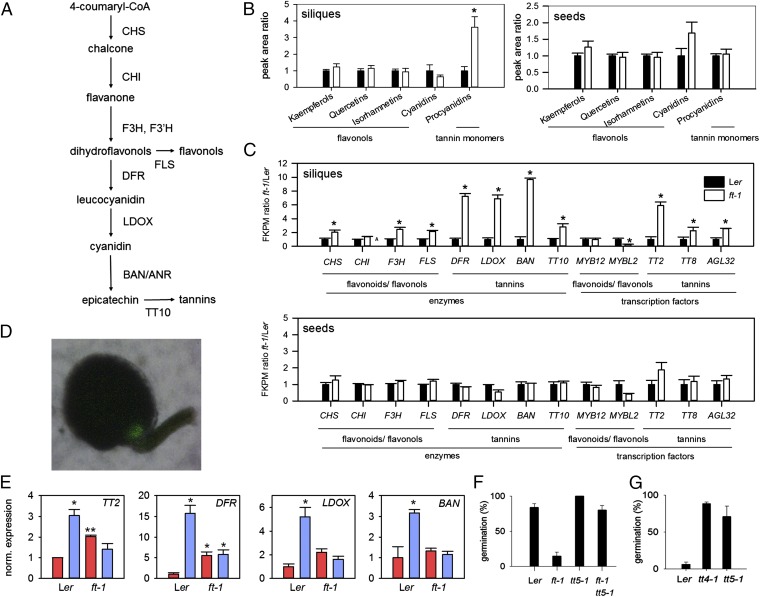Fig. 4.
FT controls proanthocyanidin synthesis in siliques. (A) Cartoon demonstrating the main phenylpropanoid pathway active during proanthocyanidin synthesis in Arabidopsis seeds. (B) LC-MS profile of the principle phenylpropanoid end products in wild-type and ft-1 seeds and siliques. Data shown are the mean and SE of five biological replicate samples per genotype. (C) RNA-seq reveals that FT regulates phenylpropanoid pathway gene expression in siliques but not seeds. Data shown are relative RNA levels of enzymes and known transcriptional regulators in wild type and ft-1 mutants. RNA-seq data represent the mean and SE of three biological replicate samples per genotype. Asterisks indicate significant differences (P < 0.01). (D) Overlayed confocal and bright field image of pSUC2:FT-GFP accumulation at the chalazal pole of the seed. (Scale bar, 100 µm.) (E) Real-time PCR was used to analyze the effect of loss of FT on the control of tannin biosynthetic gene expression in siliques. Gene expression was analyzed in siliques containing torpedo-stage embryos 4 h after dawn and data represent the mean and SE of three biological replicates per treatment. Asterisks indicate significant differences from wild type at 22 °C. Plants were grown either at 22 °C (red bars) before fertilization or 16 °C (blue bars). Asterisks denote significant differences from wild type at 22 °C: *P < 0.01, **P < 0.001. (F) The tt5-1 mutant rescues most of the increased dormancy of the ft-1 mutant set at 22 °C. Data represent mean and SE of five biological replicates per genotype. (G) transparent testa mutant seed germination is not inhibited by low temperatures before first flowering. Seeds were collected from Ler and tt mutant plants that had experienced 16 °C BFF. Data represent mean and SE of seven biological replicates per genotype.

